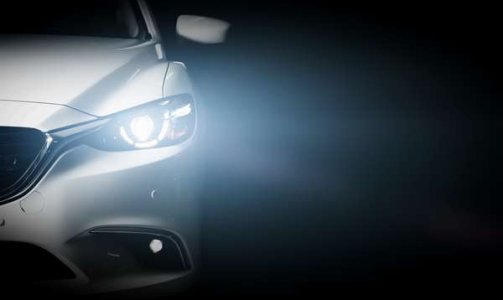Flashing your headlights could land you in hot water—find out if you're at risk!
By
KenAlunan
- Replies 9
Disclaimer: The information in this article is not intended as legal advice, and it is essential to be aware that fines and regulations can change. Staying updated on the current rules is advisable to ensure compliance with the laws in your specific state or territory.
Driving can be complicated, with many rules to remember. One rule that confuses drivers is whether flashing headlights is legal.
While it's often done as a courtesy to warn others about speed traps or to indicate it's safe to merge, it could lead to legal issues.
In Australia, the rules surrounding the use of headlights are not uniform across the country, and what might be acceptable in one state or territory could be a fineable offence in another.
New South Wales:
In New South Wales, it's a bit of a grey area.
There’s no specific law regarding flashing headlights to warn other drivers.
However, if you dazzle another road user or use high-beam lights within 200 meters of another vehicle, you could face fines and demerit points on your license.
Despite this, some police officers are ‘all for’ the practice, seeing it as a potential lifesaver.
According to the police officer, ‘If it helps slow people down, it could save a life.’
Northern Territory:
Road users in the Northern Territory are encouraged to flash their headlights when interacting with road trains (multi-trailer trucks).
The Road Safety Rules and Conditions website states, ‘When the road train has passed, flash your headlights to let the driver know that it is safe to move back in.’
Victoria:
In Victoria, the rules are strict regarding warning other road users about speed cameras.
The Royal Automobile Club of Victoria (RACV) says, ‘You’re not allowed to flash your headlights to warn other drivers about a mobile speed camera.’
While there's no specific law against flashing headlights to warn of mobile speed cameras can be found in the Victorian Road Safety Rules, it's generally not allowed.
The RACV says, ‘Drivers may switch their headlights to high-beam briefly to warn a vehicle ahead that you’re about to overtake.’
‘Using headlights on high-beam isn’t allowed within 200m of an oncoming vehicle or a vehicle travelling in the same direction ahead of you as it can dazzle the other driver.’
Queensland:
Similarly, Queensland prohibits high-beams when another vehicle is within 200 meters.
The Queensland Government says, ‘You must not have your headlights on high-beam if another vehicle is closer than 200m to you.’
‘This includes when you are following someone and when they are driving towards you.’
Briefly flashing headlights before overtaking is permitted, but drivers must ensure they do not dazzle other road users.
The Queensland Government states, ‘You may flash your headlights briefly before overtaking another vehicle, but make sure they do not dazzle other road users.’
‘You may be fined for incorrectly using your high-beam lights.’
Tasmania:
Tasmanian law states that it is illegal to ‘use high-beam headlights within 200 meters of a moving vehicle.’
It is punishable by fines and demerit points. The fine for this offence is $181 and one demerit point.
Australian Capital Territory:
ACT legislation is similar.
Their law is as follows:
However, drivers may briefly switch to high-beam before overtaking, as long as it doesn't dazzle other road users.
According to the legislation, ‘the driver may briefly switch the headlights from low-beam to high-beam immediately before the driver begins to overtake the vehicle’.
A penalty of up to $5500 may apply if taken to court.
South Australia:
South Australia does not have specific rules on flashing headlights.
However, they do indicate that you ‘can momentarily flash your headlights on high-beam to indicate to another driver that you intend to overtake’.
Western Australia:
‘High-beam lights are not permitted: if you’re driving less than 200m behind a vehicle; or if an oncoming vehicle is less than 200m or has its headlights dipped.’
Using your high-beam lights aren’t the only traffic rules and regulations that are a little unclear to Australians.
In a previous article, essential tips to avoid fines in school zones were covered. You can read more about these tips here.

Have you ever found yourself in a pickle for flashing your headlights, or do you have any tips for communicating safely on the road? Share your experiences and advice in the comments below!
Driving can be complicated, with many rules to remember. One rule that confuses drivers is whether flashing headlights is legal.
While it's often done as a courtesy to warn others about speed traps or to indicate it's safe to merge, it could lead to legal issues.
In Australia, the rules surrounding the use of headlights are not uniform across the country, and what might be acceptable in one state or territory could be a fineable offence in another.
New South Wales:
In New South Wales, it's a bit of a grey area.
There’s no specific law regarding flashing headlights to warn other drivers.
However, if you dazzle another road user or use high-beam lights within 200 meters of another vehicle, you could face fines and demerit points on your license.
Despite this, some police officers are ‘all for’ the practice, seeing it as a potential lifesaver.
According to the police officer, ‘If it helps slow people down, it could save a life.’
Northern Territory:
Road users in the Northern Territory are encouraged to flash their headlights when interacting with road trains (multi-trailer trucks).
The Road Safety Rules and Conditions website states, ‘When the road train has passed, flash your headlights to let the driver know that it is safe to move back in.’
Victoria:
In Victoria, the rules are strict regarding warning other road users about speed cameras.
The Royal Automobile Club of Victoria (RACV) says, ‘You’re not allowed to flash your headlights to warn other drivers about a mobile speed camera.’
While there's no specific law against flashing headlights to warn of mobile speed cameras can be found in the Victorian Road Safety Rules, it's generally not allowed.
The RACV says, ‘Drivers may switch their headlights to high-beam briefly to warn a vehicle ahead that you’re about to overtake.’
‘Using headlights on high-beam isn’t allowed within 200m of an oncoming vehicle or a vehicle travelling in the same direction ahead of you as it can dazzle the other driver.’
Queensland:
Similarly, Queensland prohibits high-beams when another vehicle is within 200 meters.
The Queensland Government says, ‘You must not have your headlights on high-beam if another vehicle is closer than 200m to you.’
‘This includes when you are following someone and when they are driving towards you.’
Briefly flashing headlights before overtaking is permitted, but drivers must ensure they do not dazzle other road users.
The Queensland Government states, ‘You may flash your headlights briefly before overtaking another vehicle, but make sure they do not dazzle other road users.’
‘You may be fined for incorrectly using your high-beam lights.’
Tasmania:
Tasmanian law states that it is illegal to ‘use high-beam headlights within 200 meters of a moving vehicle.’
It is punishable by fines and demerit points. The fine for this offence is $181 and one demerit point.
Australian Capital Territory:
ACT legislation is similar.
Their law is as follows:
The driver of a vehicle must not use the vehicle’s headlights on high-beam, or allow the vehicle’s headlights to be used on high-beam if the driver is driving: (a) less than 200m behind a vehicle travelling in the same direction as the driver; or (b) less than 200m from an oncoming vehicle.
However, drivers may briefly switch to high-beam before overtaking, as long as it doesn't dazzle other road users.
According to the legislation, ‘the driver may briefly switch the headlights from low-beam to high-beam immediately before the driver begins to overtake the vehicle’.
A penalty of up to $5500 may apply if taken to court.
South Australia:
South Australia does not have specific rules on flashing headlights.
However, they do indicate that you ‘can momentarily flash your headlights on high-beam to indicate to another driver that you intend to overtake’.
Western Australia:
‘High-beam lights are not permitted: if you’re driving less than 200m behind a vehicle; or if an oncoming vehicle is less than 200m or has its headlights dipped.’
Using your high-beam lights aren’t the only traffic rules and regulations that are a little unclear to Australians.
In a previous article, essential tips to avoid fines in school zones were covered. You can read more about these tips here.
Key Takeaways
- Flashing headlights to warn other drivers about speed cameras or to indicate other warnings varies in legality across different states and territories in Australia.
- New South Wales does not have a specific law against flashing headlights, but drivers may be fined for dazzling other road users or using high-beams within 200 metres of another vehicle.
- In Victoria and Queensland, using headlights on high-beam within 200 metres of another vehicle is prohibited, and drivers may be fined for incorrect use.
- The laws are consistent in most regions regarding prohibiting high-beam usage near other vehicles, with variations on the acceptance of flashing headlights for communication with other drivers.
Last edited:









